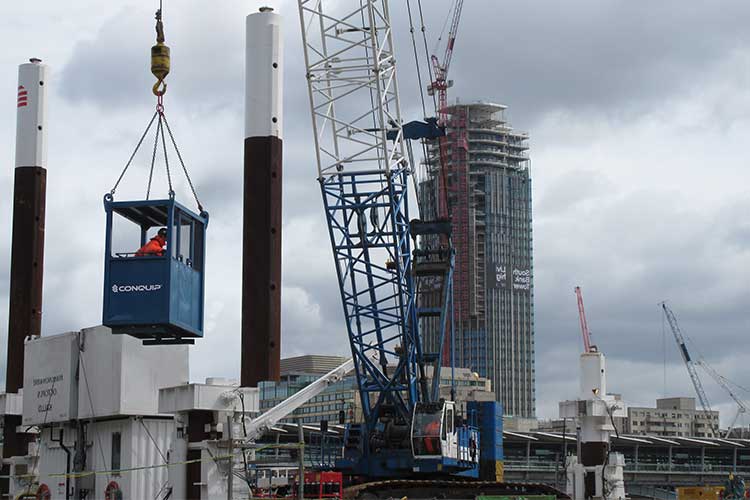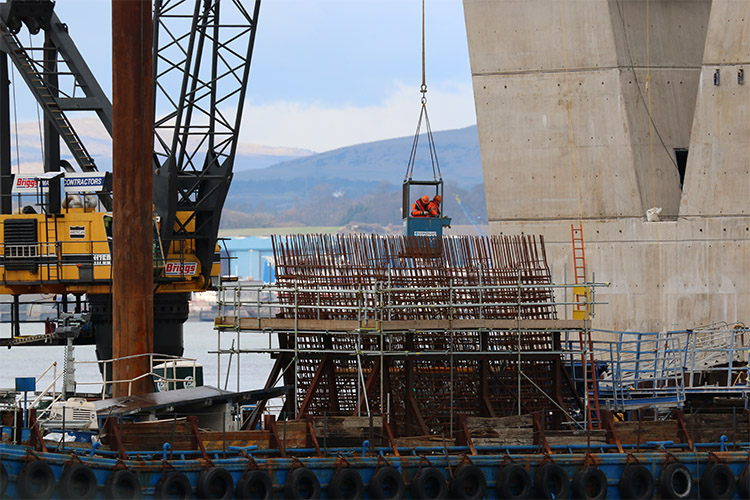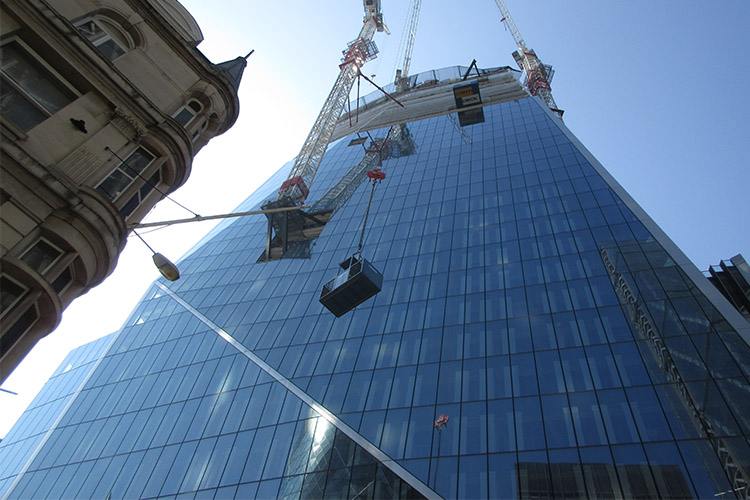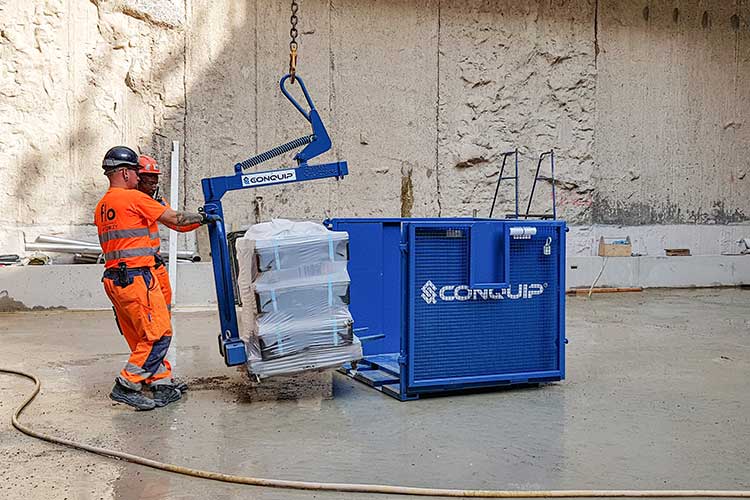Transporting personnel around small sites is pretty simple, right? But when it comes to larger projects, getting the ‘right people’ from ‘A to B’ is a whole different ballgame. Whether it’s high-rise builds, tunnels and shafts, sites with variable terrain or where access is restricted, safe personnel transport takes on a different level of complexity.
That’s where solutions like personnel cages can provide superior access to those ‘hard-to-get-to’ areas but how can you tell if they are safe?
In this article, we identify the key areas and tests that are required for compliancy and the regulations that both equipment manufacturers, and contractors undertaking lifting operations, must adhere to. Plus, we explore the range of personnel cages that Conquip offer…

What Makes a Cage Compliant?
Here are some of the main points you should be looking for:
Solid sides up to 500mm high as per 5.6.1 of BS EN 14502-1:2010.
Free foot space to avoid crushing hazard as set out in 5.4.6 of BS EN 14502-1:2010.
A slip resistant floor as set out in 5.4.2 of BS EN 14502-1:2010.
Chains must be rated 8x (weight of the cage + cage lifting capacity) as per 5.3.1 of BS EN 14502-1:2010.
What Else?
Any personnel cages or ‘man baskets’, as they are commonly referred to in the market, manufactured for use in the UK must adhere to BS EN 14502-1:2010. This standard is a set by the British Standards Institution, the national standards body for the UK.
To meet this standard, equipment manufacturers must carry out a series of tests:
LOAD TEST
To meet UK regulations, cages must be load tested to a Factor of Safety of 2.0 and for export, 2.2 times the Working Load Limit (WLL) of the cage.
TILT TEST
A load is placed in a marked-out area no greater than 30% of the cage’s floor area.
IMPACT TEST
A load is dropped on to the roof from a specified height to check deformation of the roof.
HANDRAIL TEST
The handrails need to withstand 500N of force for the UK and 600N of force for export.
SIDE PANEL IMPACT
A weight is applied to the side of the cage to check that the impact does not deform side of the cage.
HARNESS POINT TEST
1st weight test, 2nd Drop test where a weight is dropped to prove a shock loading, 3rd test re weight test.
Cages must also comply with LOLER (Lifting Operations and Lifting Equipment Regulations) to ensure they are safe to use…so what is LOLER?
LOLER (Lifting Operations and Lifting Equipment Regulations)
LOLER covers any lifting equipment or accessory used in the workplace. These regulations state that all lifting equipment must be fit for purpose, appropriate for the task in hand and suitably marked and maintained, with regular Reports of Thorough Examination documenting this. Find out more about LOLER in our Guide to Regulations for Lifting Equipment blog.
All lifting equipment should be inspected at least every 6 months, but this can be more frequent depending on usage. As part of Conquip Covered, our range of after-sales services, Conquip’s Engineers can carry out inspections on any lifting equipment and issue Reports of Thorough Examination. Find out what else is included in this service.
100% COMPLIANT
Access Cage
Our range provides access to multiple site locations including tunnels and shafts, with available capacities from 1 to 12 persons. The 2-person Access Cage is designed with an incorporated tray to hold tools and equipment, enabling operatives to work from inside it, adjacent to a building or a structure. The 12-person cage can also be fitted with a sliding half door so it can be used as a rescue cage and safely load a stretcher into it.
Features:
- Half-height solid steel sides for enhanced safety and visibility.
- Handrails and internal harness attachment points for extra stability and safety.
- 2 person is crane and fork liftable with fork pockets and heel pins

Rescue Cage
Designed to take an injured person suspended on a harness, the Rescue Cage provides a safe method of collecting and transporting injured personnel from a building structure, shaft, or excavation.
Features:
- Inverted T-shape design and short end door for easy access.
- Handrails and harness points for additional stability and safety.
- Half-height mesh sides offer superior protection and visibility.

Stretcher Cage
A safer alternative to lifting a stretcher up or down temporary stairways, our Stretcher Cage is designed to transport injured operatives from hard-to-reach locations to safety.
Features:
- Capacity for casualty and 1 assistant.
- Half-height solid sides provide greater visibility for crane operator.
- Overhead frame and solid roof offer best protection for personnel.

Did you know?
We offer more than just personnel lifting solutions…click the button below to browse our full range of lifting equipment.

References
https://www.hse.gov.uk/work-equipment-machinery/lift-persons.htm
https://www.hse.gov.uk/work-equipment-machinery/loler.htm
BS EN 14502-1:2010: Cranes – Equipment for the lifting of persons






